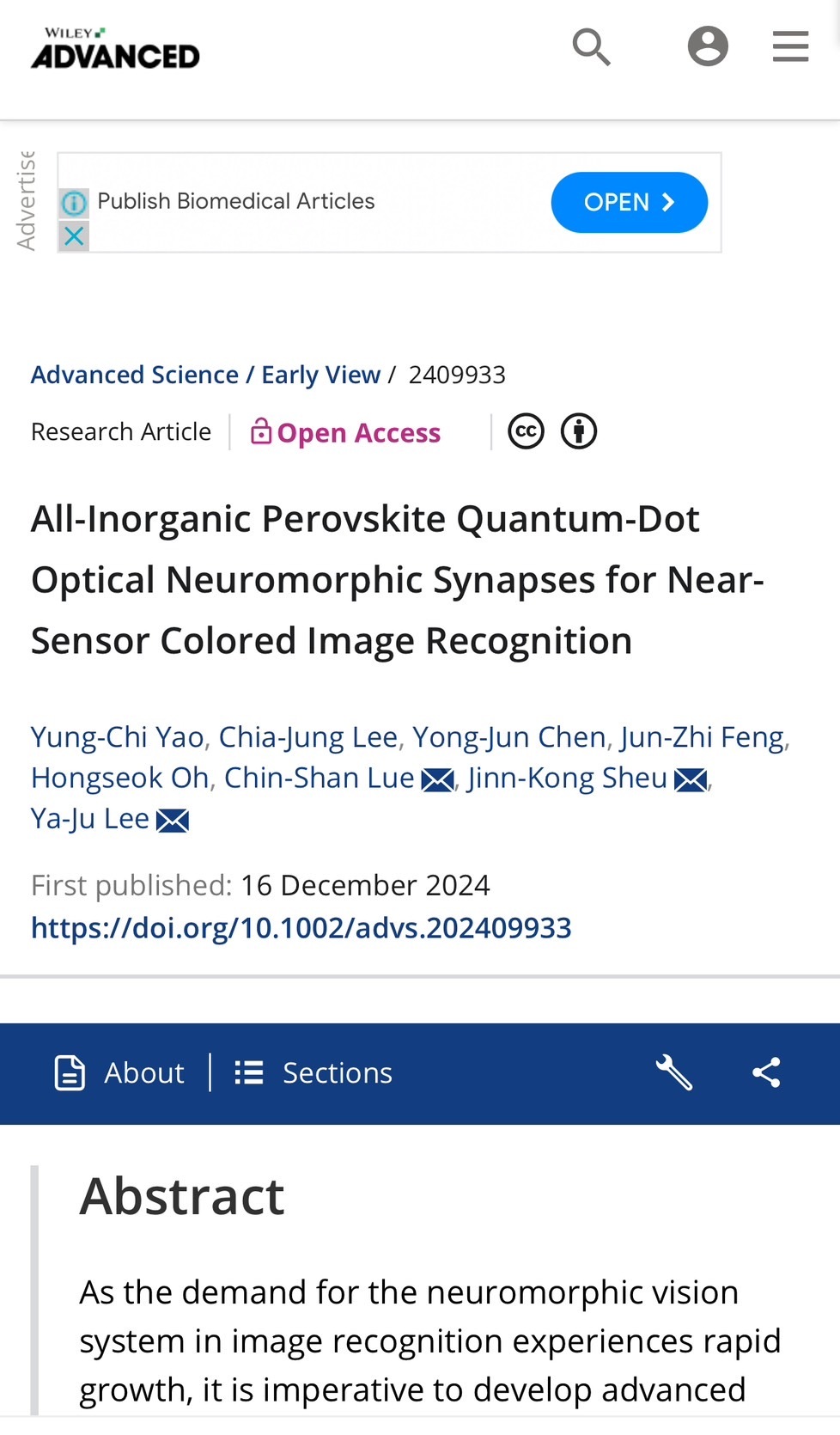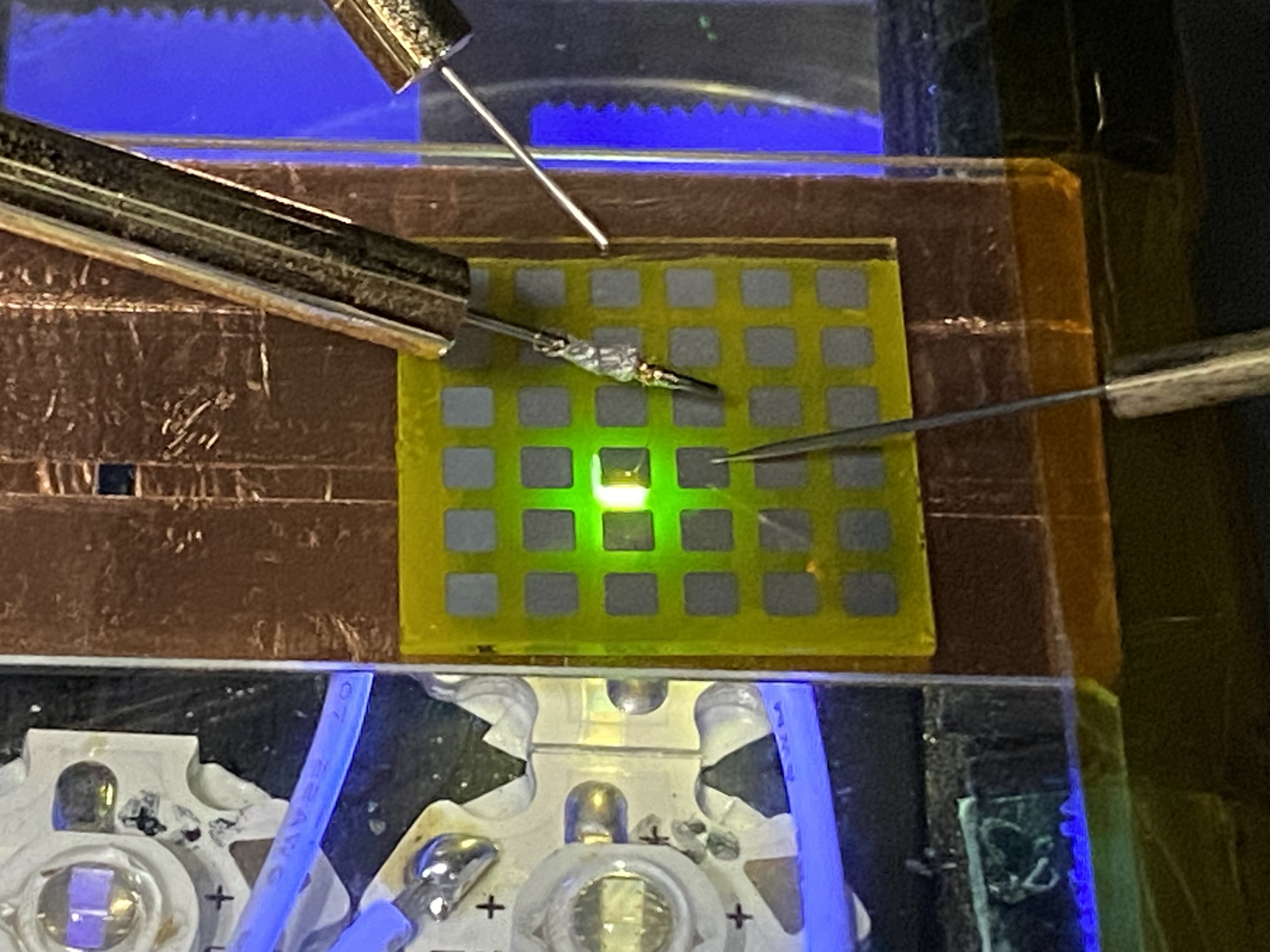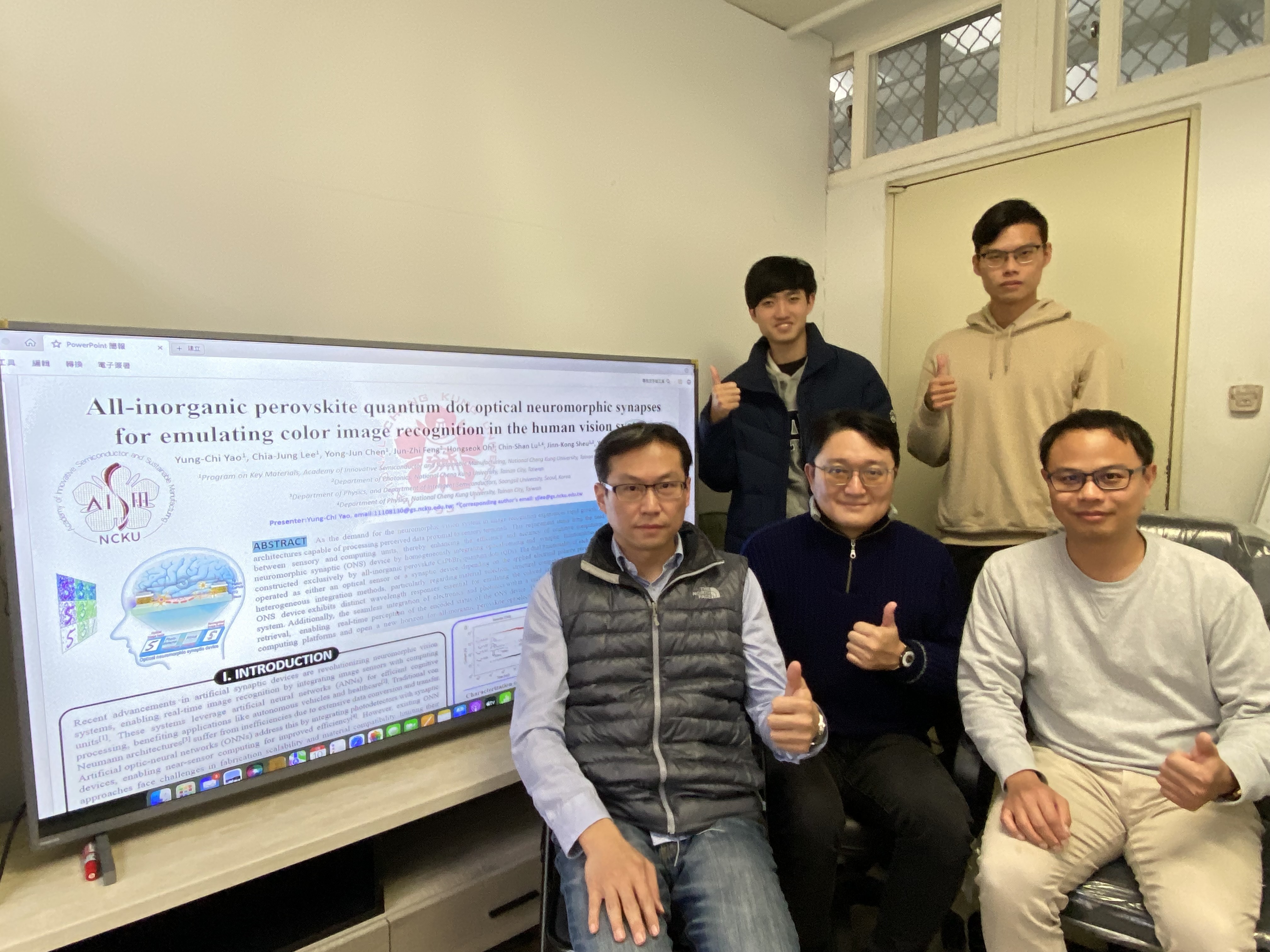A research team from the Academy of Innovative Semiconductor and Sustainable Manufacturing (AISSM) at National Cheng Kung University (NCKU) has developed an innovative optical biomimetic device, paving a new horizon for proximity sensing technology.
Written by Ya-Ju Lee.Image credit to NCKU News Center.
Taiwan, widely recognized as the kingdom of semiconductors, continues to lead global advancements in cutting-edge technology. A research team led by Professor Ya-Ju Lee from the Academy of Innovative Semiconductor and Sustainable Manufacturing (AISSM) at National Cheng Kung University (NCKU) has achieved a major breakthrough by developing an advanced optical neuromorphic synaptic device utilizing all-inorganic perovskite (CsPbBr3) quantum dots (QDs). This innovative device integrates sensing, memory, and computing functions, paving the way for significant advancements in in-sensor computing technology. Its potential applications include efficient color image recognition for autonomous vehicle navigation, smart manufacturing, and medical imaging analysis—offering tremendous opportunities for artificial intelligence (AI) development. The team's groundbreaking findings were published in the prestigious international journal “Advanced Science”, earning widespread global attention. All-Inorganic Perovskite Quantum-Dot Optical Neuromorphic Synapses for Near-Sensor Colored Image Recognition

Professor Ya-Ju Lee, from the AISSM at NCKU, has led his team to develop an advanced optoelectronic neuromorphic synaptic device using all-inorganic perovskite quantum dots. This innovative achievement paves the way for significant advancements in in-sensor computing technologies, with their findings published in the international journal “Advanced Science”.
Prof. Lee stated that this research and development effort, supported by a two-year project funded by the National Science and Technology Council, has yielded significant results. The research has not only received recognition from the academic community but has also attracted significant interest from the semiconductor industry. Collaboration with domestic manufacturers is scheduled to begin soon, which will further advance research and facilitate real-world testing. Prof. Lee also noted that the 2023 Nobel Prize in Physics was awarded to John J. Hopfield and Geoffrey E. Hinton for their pioneering contributions to artificial neural networks (ANN), a cornerstone of modern machine learning. As technology increasingly emulates biological systems, innovations like this represent the future of technological development.

Professor Ya-Ju Lee’s team at NCKU has developed an innovative optical biomimetic neuromorphic synaptic device that emits green light when exposed to ultraviolet (UV) emissions.
Image recognition technology is built on a similar principle. Prof. Lee explained that the goal is to replicate the human recognition process, where the eyes capture visual data that the brain recognizes, analyzes, and stores. While there are various methods to fabricate semiconductor memory devices, many involve complex or costly processes with varying levels of efficiency and energy consumption. To address these challenges, the research team developed an innovative optical neuromorphic synaptic device with a dual-unit design. This device emulates the dynamic synaptic behavior of the human visual system by adjusting synaptic weights in response to light at different wavelengths, enabling biologically inspired advancements in image recognition technology.

Professor Ya-Ju Lee’s team at NCKU has developed a structure utilizing all-inorganic perovskite quantum dot optoelectronic biomimetic neuromorphic synaptic devices, along with a schematic diagram that illustrates the functioning of their device.
The core of the device is a resistive random access memory (RRAM) structure, where CsPbBr3 QDs serve as the active layer and silver metal and indium tin oxide (ITO) layers function as electrodes. The use of a single material simplifies the fabrication process, while reversing the electrical polarity applied to the electrodes provides multifunctional control. This approach offers several benefits, including low energy consumption, high performance, and cost-effectiveness. When integrated into a 28×28 array with a single-layer artificial neural network, the device demonstrated its capabilities by successfully performing neuromorphic encoding to identify ultraviolet, blue, and green MNIST handwritten digits, achieving a classification accuracy exceeding 90%. These results underscore its potential for tackling complex image recognition challenges.

Professor Li Ya-Ju's team at NCKU has successfully developed an innovative optically bionic neuromorphic synaptic device. The team members are, from left to right in the front row, Professor Ya-Ju Lee, postdoctoral researcher Dr. Yung-Chi Yao, and PhD student Chia-Jung Lee. In the back row, from left to right, are master's students Chun-Chih Feng and Yung-Chun Chen.
Additionally, the technology aligns well with silicon photonics—a widely embraced field that replaces traditional electrical signal transmission with photon-based transmission, significantly enhancing efficiency while reducing energy consumption and heat generation. The NCKU innovation extends its applicability to silicon photonics-related systems. According to Prof. Lee, the device uses ultraviolet light for optical encoding and green light for erasing encoded states, enabling real-time sensing and detection. With its ability to perform synchronous photon energy (or wavelength) detection, this non-contact optical encoding system offers enhanced precision and operational efficiency.
Provider:
NCKU News Center
Date:
2025-01-23